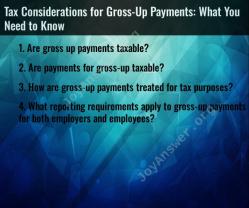How do you calculate percentage margin?
Percentage margin, often referred to as profit margin, is a measure of a company's profitability and is expressed as a percentage. It represents the percentage of each dollar of revenue that is converted into profit after deducting all expenses. To calculate percentage margin, you can use the following formula:
Percentage Margin = (Net Profit / Total Revenue) x 100
Here's a step-by-step breakdown of the formula and how to calculate percentage margin:
Determine Net Profit: Calculate your company's net profit, which is the total amount of profit left after subtracting all expenses, including operating expenses, cost of goods sold (COGS), taxes, and interest. The net profit is the amount that goes to the shareholders or owners of the company.
Net Profit = Total Revenue - Total Expenses
Calculate Percentage Margin: Use the net profit and total revenue to calculate the percentage margin using the formula mentioned above.
Percentage Margin = (Net Profit / Total Revenue) x 100
Express as a Percentage: Multiply the result by 100 to express the percentage margin as a percentage.
Percentage Margin = (Net Profit / Total Revenue) x 100%
For example, if a company has a net profit of $50,000 and total revenue of $200,000, the percentage margin would be calculated as follows:
Percentage Margin = ($50,000 / $200,000) x 100% = 25%
In this example, the company has a percentage margin of 25%, which means that 25% of its total revenue is retained as profit after covering all expenses.
Percentage margin is a critical financial metric as it helps assess a company's profitability and efficiency in managing costs. A higher percentage margin indicates better profitability, while a lower margin suggests lower profitability. It's essential to analyze percentage margin in the context of industry benchmarks and historical performance to make informed decisions about a company's financial health and future strategies.
Percentage margin is a measure of profitability that shows how much profit a business makes on each dollar of sales. It is calculated by dividing the gross profit by the revenue and multiplying by 100.
The formula for percentage margin is:
Percentage margin = (Gross profit / Revenue) * 100
Where:
- Gross profit is the difference between revenue and the cost of goods sold (COGS).
- Revenue is the total amount of money generated from sales.
For example, if a business has revenue of $100,000 and a gross profit of $20,000, its percentage margin would be 20%. This means that the business makes a profit of $20 on every $100 in sales.
Percentage margin can be calculated for different levels of a business, such as product lines, departments, or the entire business. It can also be used to compare the profitability of different businesses.
Here are some tips for improving percentage margin:
- Increase sales.
- Reduce COGS.
- Increase prices.
- Reduce expenses.
Percentage margin is an important metric for businesses to track because it can help them to identify areas where they can improve their profitability.













